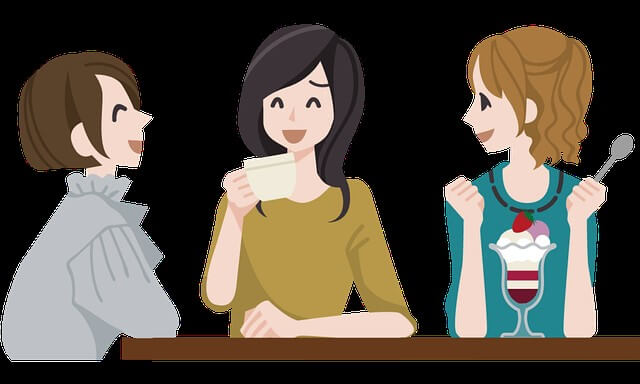“Show me a family of readers, and I will show you the people who move the world.” Napoleon Bonaparte
I clearly remember being about 11 years old, walking into my school library. Overwhelmed by all the choices, I asked the grandmotherly library assistant for help. Putting her hand on my shoulder, she pulled me aside and almost whispered, “You are just the type of girl who would enjoy the book I’m about to show you.” That’s when I met L. M. Montgomery’s classic heroine, Anne Shirley, of Anne of Green Gables fame.
That wonderful woman gave me two gifts that day. The first was the gift of being seen and understood. She saw a young girl clearly in love with the written word, one who was looking to feast on literature. Secondly, she gave me a newfound delight in literature. I had been given books as presents before, but this was something entirely different. What she put in my hand that day was the seed of the love of literature which would flourish into my adult life and then be handed down to my own children. She had shared a treasure with me, one I believe that she didn’t take lightly, nor did I.
With all of the responsibilities parents face, it might seem that picking and choosing books to build a home library is rather low on the list. It’s far too easy to fall into the mindset of “as long as they’re reading, what does it matter?” It matters—more than parents might realize.
When parents begin to realize the joy of well-chosen words and illustrations, it’s inevitable that curating a home library follows. Children will naturally gravitate towards excellent stories if only they are introduced to them. They will want to hear them again and again until everyone knows them by heart, and then they’ll want to hear them some more. Some of the most wonderful things to see in a home are books that have been read over and over until they’re almost falling apart.
Read-alouds are not just for the little ones who aren’t reading independently quite yet. My teenagers will still sit and listen when I read, especially if it’s a family favorite. Not only do they appreciate the familiar words, but the comfort of being together, doing something peaceful, and creating a bond with their family is too inviting to pass up.
Reading creates bonds within your family. We have a rule at our dinner table that there is no screen talk. The goal has been to focus on current events, what they have been learning in Sunday school or in church sermons, what’s been happening in their individual lives, or books they have been reading. We have learned so much from each other! Stories have been remembered, recommended, and joked about over many years. Please don’t get me wrong. We are not book snobs who sit around and only discuss books. It has just worked to be a guideline and reminder to us all (Mama and Daddy included) to keep the conversation focused and intentional.
So what books do you choose to create or add to your home library? Of course, we know that every family is different and that will be reflected in the books you see upon your shelves. By force of habit, one of the first things I do when going to someone’s house for the first time is to look at which books they have on their shelves. That gives me a glimpse into the character of my hosts. It gives me a thrill of pleasure to see old familiar book friends as well as quite possibly new ones that I need to add to my “to-be-read” list. When curating your own library, it pays to be choosy. Not only will you want to develop a taste for what is quality literature, but you will also want to stay clear of books that will lack richness of language, are shallow in their plots, and are poorly illustrated.
The first question to ask is, what makes quality literature? Quality literature are books that have several different qualifications. First, is there noticeable and excellent character development? A story can have a character spiraling into sin and vice, but if it is written in such a way that shows the process and yet does not celebrate it, it can be considered wonderful character development (looking at you, Anna Karenina).
On the flip side, heroes or heroines who grow in understanding of themselves and others around them, learns from their mistakes, and shows a great improvement by the end of the story will quickly be a model for character development. Which children’s book characters demonstrate growth like this? We love Wilbur from E. B. White’s Charlotte’s Web, Daniel in The Bronze Bow by Elizabeth George Speare, the March Sisters in Little Women by Louisa May Alcott, and Edmund in C. S. Lewis’ masterpiece The Lion, the Witch, and the Wardrobe.
Quality literature will also create opportunities for in-depth conversation with your children. One of my favorite things to do is to find characters or situations in books that I can point out to my kids. We can talk about qualities that are endearing, such as Samwise Gamgee’s loyalty and faithfulness to Frodo in the Lord of the Rings series (J. R. R. Tolkien), Horton’s endurance in Dr. Seuss’ Horton Hatches the Egg, and the perseverance and hard work displayed in Mike Mulligan and His Steam Shovel (Virginia Lee Burton). But, by far, the best book to do this is Little Pilgrim’s Progress by Helen L. Taylor. Based on Bunyan’s allegory of the Christian life written in the 17th century, this book beautifully adapts the story for children. We have read it multiple times, and I am always amazed by the discussions we have as a family and the way my children analyze and digest Christian and Christiana’s stories.
Another thing to look for in deciding if a book would be considered quality literature is if the plot will stand the test of time. No matter what the setting and time frame, well-written books will have a timelessness about them. Sure, the technology and society may be different than how we are living right now, but if the conflicts and relationships are the same, it will translate to our modern day well. Feeling lonely? Frances Hodgson Burnett’s The Secret Garden will resonate well. Feeling misunderstood or overlooked? Try The Sword in the Stone (The Once and Future King) by T. H. White. Great literature will cause the reader to say to themselves, “Me, too!”
One last thing that is important, especially in children’s books (though one could argue that we need more in older books, as well) is quality illustrations. Before little ones have phonics and decoding skills, they will “read” through pictures. Don’t discount the necessity of being able to feast with our eyes. Illustrators such as Tasha Tudor, Ernest Shepard, Garth Williams, Jessie Willcox Smith, and Steven Kellogg are just a few of many that bring stories to life and are a delight to see.
An intentionally curated home library provides families the ability to feast on great works, enriching their lives as a whole as well as individually. If you are looking to inspire your children to be world movers, I humbly suggest you begin with your bookshelves.



